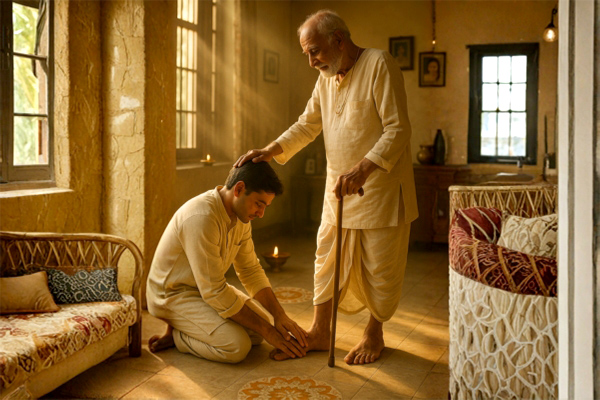
Have you ever wondered why, in Hindu culture, people bow down to touch someone’s feet?
It’s not just a habit. It’s not just a ritual. It’s a moment; one where ego bends and reverence rises.
You’ll see it in homes, temples, and festivals. A young person greets their elders. A student bows before their guru. A devotee reaches for the feet of a murti during darshan. But what’s really happening here?
Why the feet? Why not the hands?
And why is this gesture followed by a blessing, not with words alone, but with the touch of a hand over the head?
In Hinduism, every small act carries a deep vibration. Charan Sparsh , or touching the feet, isn’t just about respect, it’s about receiving. It’s about recognizing the spiritual journey of someone else and allowing their energy, experience, and grace to flow into your life.
In this article, you’ll uncover how this sacred tradition bridges generations, honours divinity, and aligns your body, mind, and soul with something far greater.
The Cultural Meaning of Touching Feet
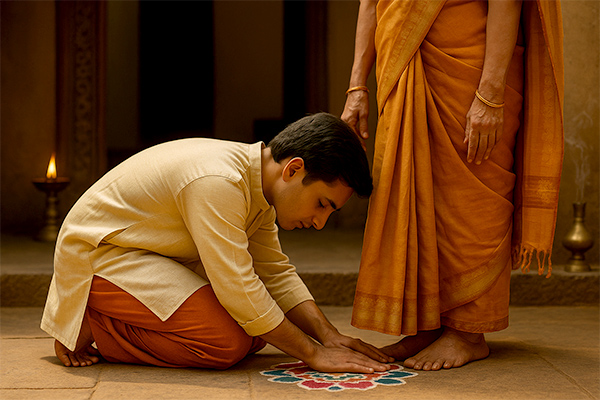
In Hindu culture, touching someone’s feet is one of the most intimate and profound ways of showing reverence. It is not just a tradition; it is a transmission. Charan Sparsh is taught from childhood not as obedience, but as a reminder of one’s roots. It expresses Shraddha (reverence), Namrata (humility), and Sankalp (the intent to receive blessings).
Unlike in many cultures where respect is expressed through words or gestures, Hindus believe the body must participate in the act of honouring, hence, the physical act of bowing down.
Whose feet do we touch and why?
-
Parents and Grandparents
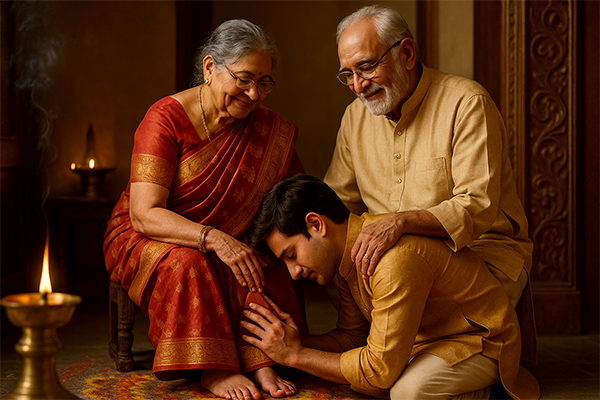
As givers of life and nurturers of Dharma, their feet are touched to honour their sacrifices and unconditional love.
- Gurus and Teachers
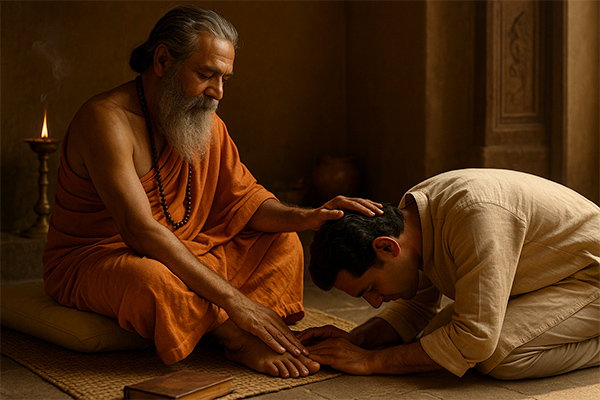
As dispensers of knowledge, their feet represent the very ground on which learning begins. In many traditions, the guru’s feet are revered more than the scriptures.
- Elders and Respected Guests
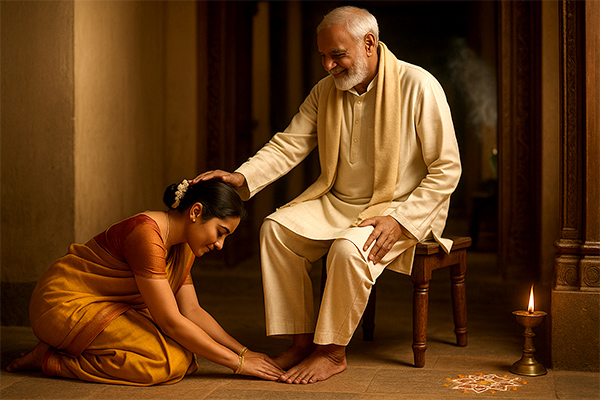
Age brings experience. By touching their feet, one honours the path they’ve walked, through joys, hardships, and wisdom.
-
Saints, Monks, and Sannyasis
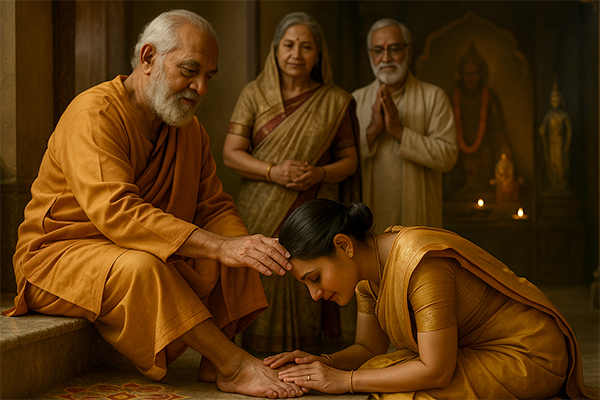
Those who have renounced worldly life and walked the path of inner realization are believed to radiate spiritual energy. Their blessings are seen as deeply purifying.
- Deities and Idols

In temples and home altars, devotees often touch the feet of the murti (idol) during darshan. This is symbolic of surrender, acknowledging the Divine as one’s highest refuge and guide.
In every case, the feet symbolize the foundation of love, knowledge, experience, or divine truth. Touching them becomes a way to ground oneself in these higher values.
In a world that often rushes past tradition, this one gesture gently slows you down, asking you to bend, reflect, and reconnect with something greater than yourself.
Spiritual & Scriptural Significance
In Hinduism, touching the feet of elders and deities transcends mere cultural etiquette; it's a profound spiritual act deeply rooted in ancient scriptures and traditions.
Scriptural References
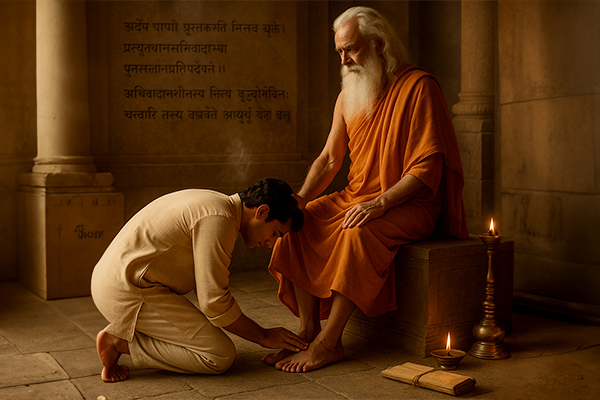
The practice of Charan Sparsh (touching the feet) is emphasized in several Hindu scriptures:
Manusmriti 2.120:
ऊर्ध्वं प्राणा ह्युत्क्रामन्ति यूनः स्थविर आयति।
प्रत्युत्थानाभिवादाभ्यां पुनस्तान् प्रतिपद्यते ॥ Wisdom Library+1bookstruck.app+1
ūrdhvaṃ prāṇā hyutkramanti yūnaḥ sthavira āyati |
pratyutthānābhivādābhyāṃ punastān pratipadyate ||
Translation: 'When an elder approaches, the vital energies of the younger rise upwards; by rising to greet and saluting the elder, these energies return.' Wisdom Library
Manusmriti 2.121:
अभिवादनशीलस्य नित्यं वृद्धोपसेविनः।
चत्वारि तस्य वर्धन्ते आयुर्धर्मो यशो बलम् ॥
abhivādanaśīlasya nityaṃ vṛddhopasevinaḥ |
catvāri tasya vardhante āyurdharmo yaśo balam ||
Translation: 'For one who is habitually respectful and serves elders, four things increase: lifespan, dharma (righteousness), fame, and strength.'
These verses underscore the sanctity of the act and its role in maintaining societal harmony and personal growth.
Symbolism of the Feet
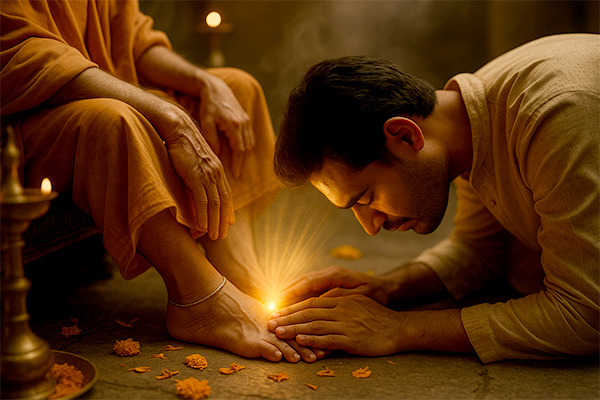
In Hindu philosophy, the feet symbolize the foundation of one's spiritual journey. Touching the feet represents surrendering one's ego and acknowledging the wisdom and experience of the person. It's believed that the divine energy or blessings (Ashirwad) flow from the feet of the revered to the seeker.
Spiritual Benefits
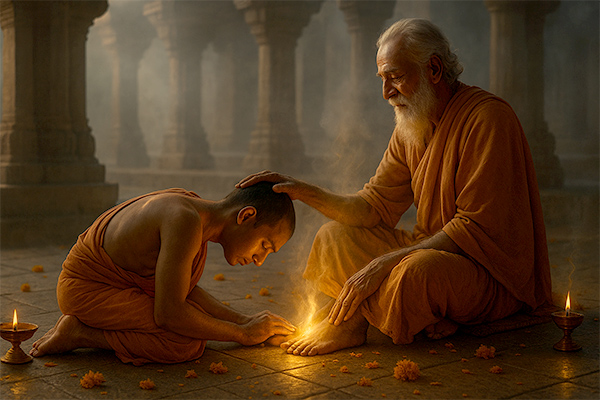
Transmission of Energy: Elders and spiritual leaders are thought to possess positive energy accumulated through years of righteous living. Touching their feet allows this energy to be transferred to the seeker.
Ego Dissolution: The act symbolizes the surrender of one's ego, promoting humility and openness to learning.
Blessings for Prosperity: Receiving blessings after touching someone's feet is believed to bring prosperity, wisdom, and protection from negative influences.
By engaging in this practice, devotees not only show respect but also align themselves with the virtues and spiritual strength of those they revere.
Why Do Devotees Touch the Feet of Deities?
In Hindu Dharma, the feet of the Divine are not a symbol of lowliness, they are a portal. A place where the devotee’s surrender meets the deity’s grace.
The Feet: A Sacred Threshold
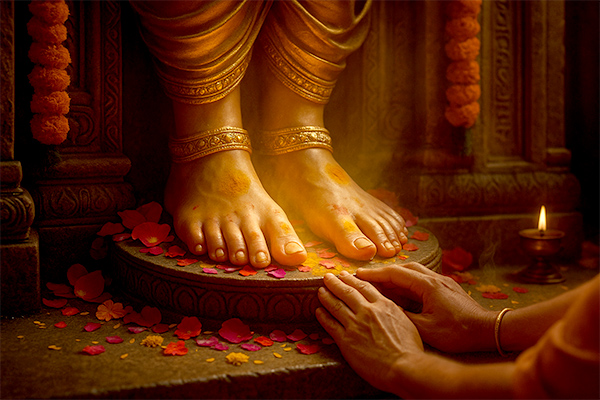
In many scriptures, the feet of the Lord are described as lotus-like, soft, radiant, and untouched by the world. The Bhagavata Purana repeatedly calls them the Pādaravindam (lotus feet), which are:
- The final resting place of all wandering souls
- The shelter that removes fear
- The gateway to liberation (moksha)
When you touch the deity’s feet, you are not just offering reverence, you are saying:
“I leave my burdens here. I offer my ignorance. I ask to walk your path.”
Worship Begins at the Feet
- In Vaishnava tradition , even the padukas (sandals) of Vishnu or Rama are worshipped — because they carry the dust of the Lord’s path.
- In Shaiva temples , the linga abhishek often starts by pouring water or milk over the base, symbolically bathing Shiva’s feet.
-
In
Shakta temples
, the feet of the Goddess are known as pada-padma, the very earth of divine energy.
Why Touch the Feet in a Temple?
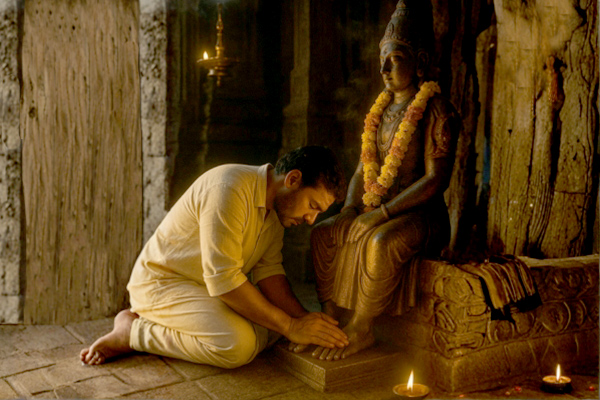
- Because the idol is not just a sculpture — it is infused with prana during Prana Pratishtha.
- Because divine energy flows downward, and the feet hold the densest concentration of it.
- Because in that one moment of touch, you are not a separate being; you are a soul reaching back to its source.
Touching the feet of God is not just devotion. It is dissolution. It is the final step of ego, before entering the sanctum of truth.
Scientific and Psychological Insights
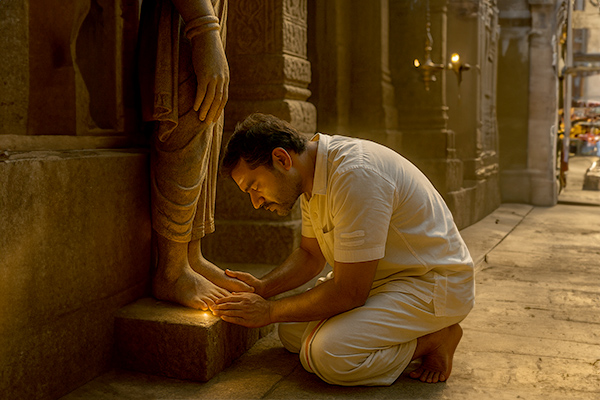
While touching the feet of elders and deities is deeply rooted in spiritual and cultural traditions, modern science and psychology offer fascinating insights into the benefits of this practice.
Bioelectric Connection
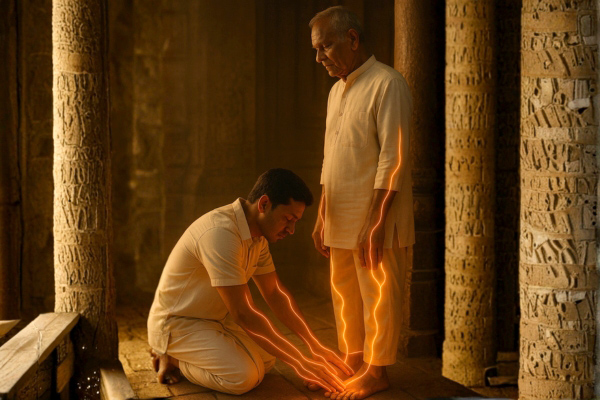
The human body operates on a complex system of bioelectricity. According to ancient Indian wisdom and supported by modern science, the body has both positive and negative currents. The right side of the body is associated with positive energy, while the left side carries negative energy. When a person touches the feet of an elder, especially by crossing hands (right hand to right foot and left hand to left foot), it is believed to form a complete circuit of energy exchange. This act allows the seeker to receive positive energy, strength, intellect, knowledge, and fame from the elder.
Activation of Energy Centers
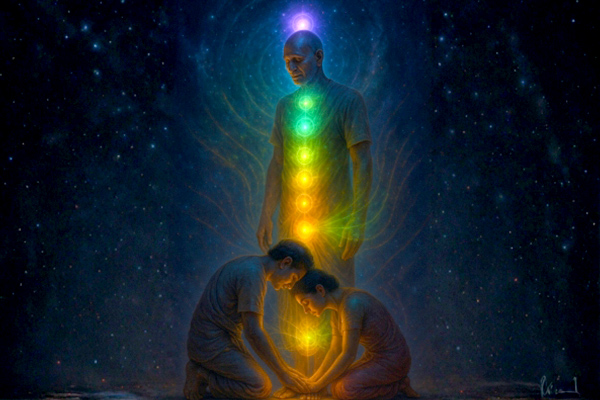
In yogic science, the human body is said to have seven primary energy centres or chakras. When bowing to touch someone's feet, the Ajna Chakra (located between the eyebrows) and the Sahasrara Chakra (at the crown of the head) are activated. This activation promotes humility and the dissolution of ego. Simultaneously, the act stimulates the Anahata Chakra (heart centre) of the elder, fostering feelings of love and compassion, which are then transmitted back to the seeker.
Psychological Benefits
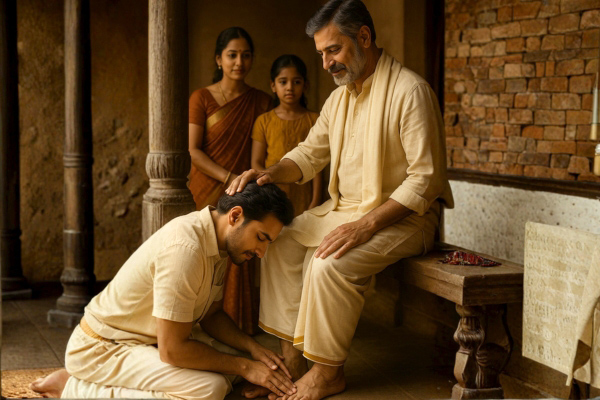
Ego Dissolution: Bowing down and touching someone's feet is a physical manifestation of surrender, promoting humility and reducing egoistic tendencies.
Emotional Bonding: This gesture strengthens interpersonal relationships by expressing respect and seeking blessings, leading to emotional closeness.
Stress Reduction: Engaging in such respectful practices can induce a sense of peace and reduce stress levels, contributing to overall mental well-being.
Physical Health Advantages
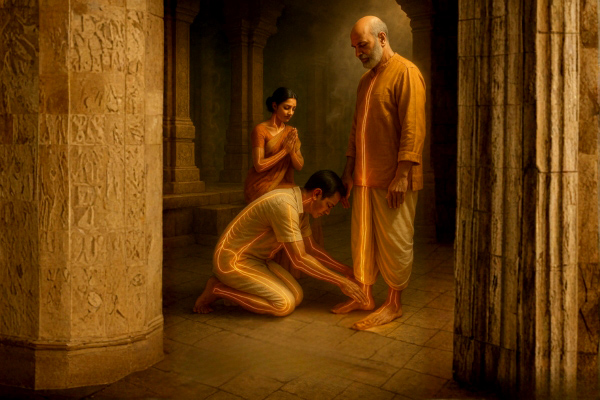
Different forms of touching feet, such as bending forward, kneeling, or full prostration (Sashtang Pranam), involve various physical movements that can stretch and strengthen different parts of the body. These movements enhance flexibility, improve blood circulation, and can alleviate joint pain.
In essence, the act of touching feet is a harmonious blend of spiritual reverence, scientific rationale, and psychological well-being.


-in-Astrology.jpg)
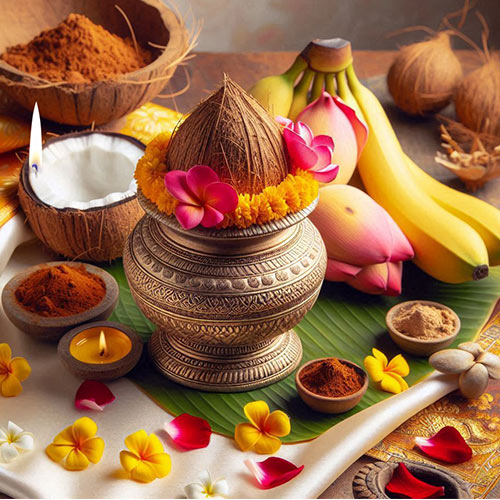
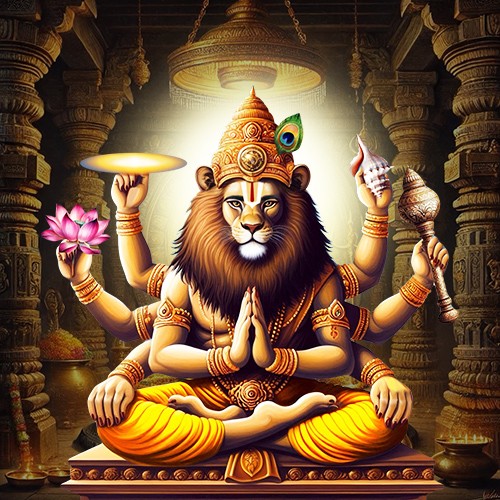

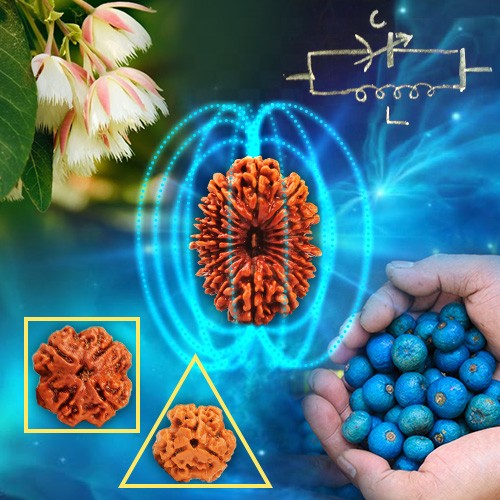

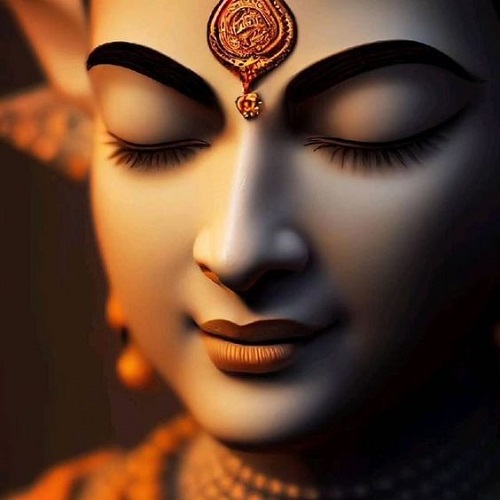
.jpg)
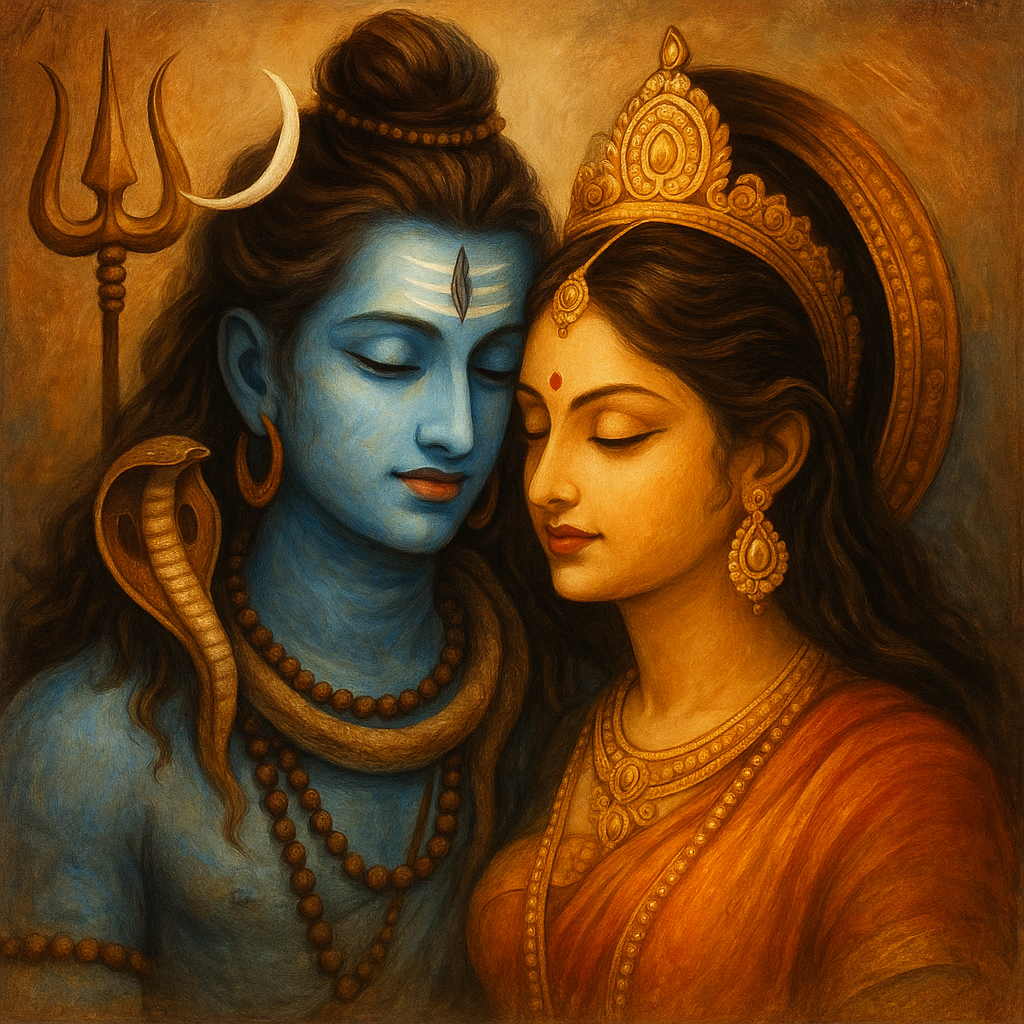

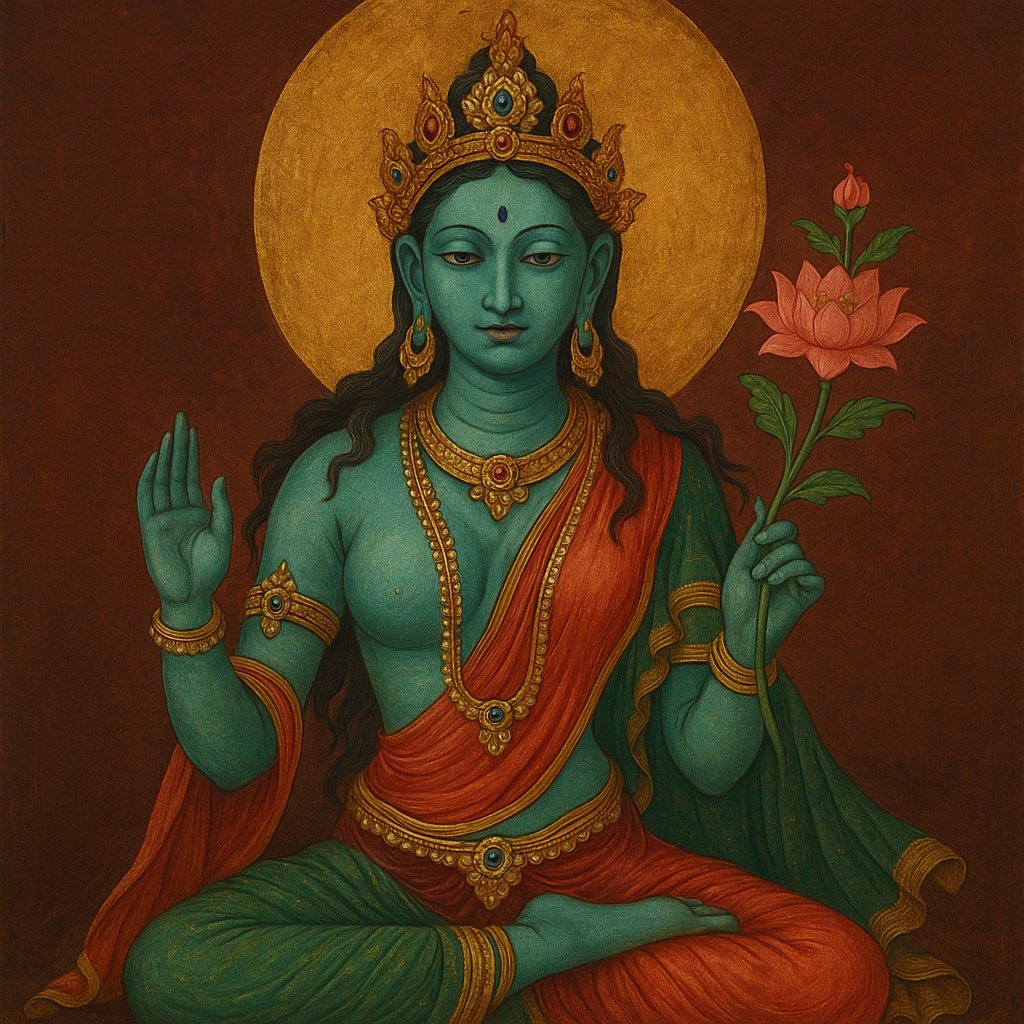
Comments 0
Leave your thought here